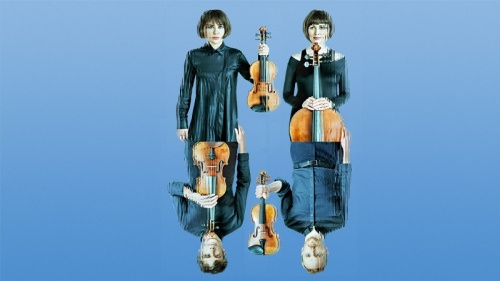
Music / “Moore Beethoven Brahms”, Australian String Quartet. At Gandel Hall, NGA, May 26. Reviewed by ROB KENNEDY
YOUTH, creativity and the natural world were on the program for this concert by the Australian String Quartet.
As an introduction to the nature-inspired work by Australian-Dutch composer Kate Moore, a recorded piece titled “Prelude” by Sydney-based soundscape artist/composer Brendon Woithe filled the hall with a simulated song of the bush and ushered in the members of the Australian String Quartet (ASQ), who are Dale Barltrop, violin; Francesca Hiew, violin; Stephen King, viola and Sharon Grigoryan, violoncello.
Testing out a new performance format, the ASQ not only sat on seats but on the floor with the audience. This helped increase their volume and up-close experience.
Imagine the sound of the bush filled with cicadas and nature. This is what Kate Moore’s “String Quartet no 3 Cicadidae” in its premiere season sounded like through this one-movement piece. But it was more than that. The changing harmony and an almost melody that swapped between instruments as they came in and went out kept the ear and mind alert.
The nature of such a highly rhythmic work quickly became mesmerising. Listening to the players come in and go out through phrases created a sonic stimulation, just like the sound of thousands of cicadas do. This is not a piece that every string quartet could play and the ASQ did a sterling job at bringing it all together.
Next came Beethoven’s “String Quartet No. 4”. The symmetry of this quartet is what makes it work. The small and large musical phrases, the complexity of four different lines of music sounding together and the balance between the sections were perfectly aligned, as was the playing. One could listen to the ASQ all day and never hear a wrong or out-of-sync note.
Beethoven’s ability to change style and tempo so rapidly and make it fit seamlessly is a sign of a master composer, and the players articulated well, Beethoven’s brilliant voice.
After the interval, we heard the strongly passionate and sensitive music of Brahms, his “String Quartet No. 1”. For a first string quartet, this breathes fire and tranquillity and speaks loudly of an intense musical mind. Brahms waited until he was 40 to release this quartet to the public. Going through many trials and rewrites he only let it out knowing that it was good enough to be heard against the known string quartet canon.
The strong German romanticism in this work shines through. The second slow movement speaks of a tenderness that words cannot say. The third movement, which is full of mystery and pizzicato phrases led beautifully to the final section.
Back into the fire and anguish of its home key C minor, the restless music of the fourth movement went through many changes. It increased in volume and tempo towards a powerful and full crescendo finish that was played with gusto by all and wowing the audience.
Who can be trusted?
In a world of spin and confusion, there’s never been a more important time to support independent journalism in Canberra.
If you trust our work online and want to enforce the power of independent voices, I invite you to make a small contribution.
Every dollar of support is invested back into our journalism to help keep citynews.com.au strong and free.
Thank you,
Ian Meikle, editor









Leave a Reply